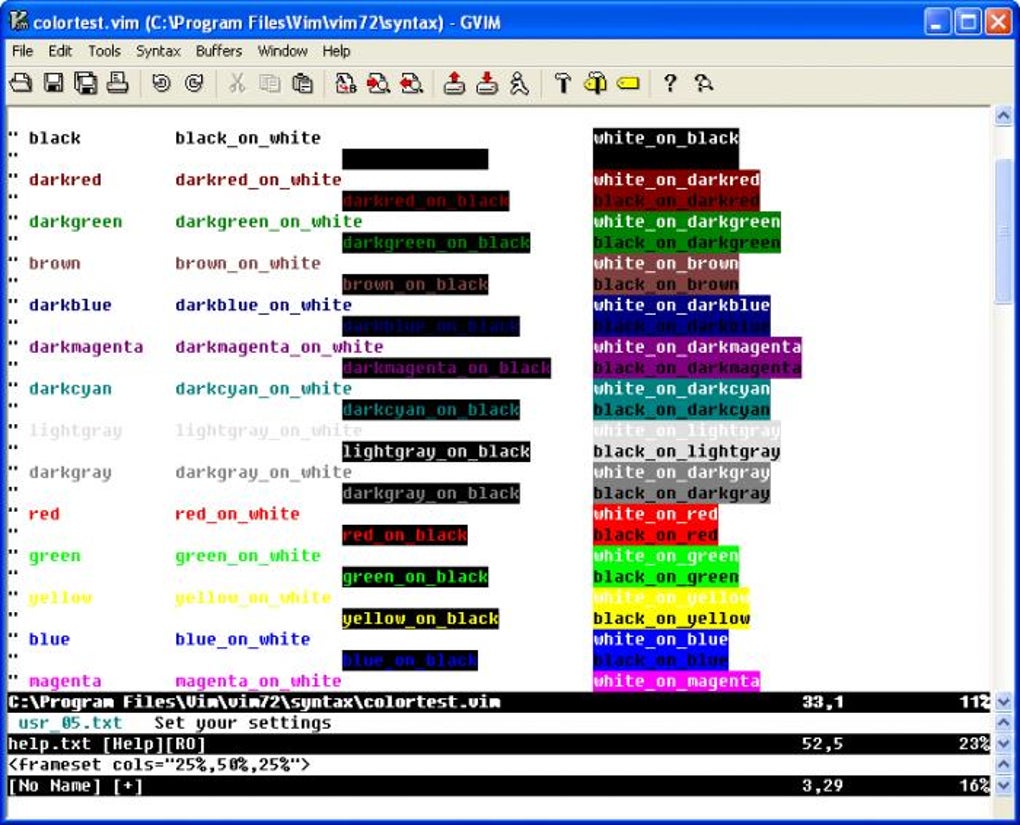
Gvim Install
/YXRHQMN8q9-2065126366d243adb89b73a732920087.png)


Gvim32
Right click on gVim icon - Properties - Compatibility - Change high DPI settings - check box 'Override high DPI scaling behavior' in the bottom of the dialog window and set 'Scaling performed by:' to 'System (Enhanced)' Share. If you want to simply change the font size in a running GVim instance, type::set guifont=. A window should pop up letting you set font size as well as pick a new font if desired. You can then ask Vim to print the line you would need to add to your /.gvimrc to make the change permanent.
Ok folks, I found an easy way to save your font and color scheme settings in gVIM. Here goes:
First, specify your font by going to Edit > Select Font (btw, I'm on a Windows machine, so maybe the Linux menus are different).
Second, after you've selected your font, enter the command :mkvimrc!. This will write your font choice (and key mappings, etc) to your _vimrc file. This will NOT save your color settings if you're using a theme, however. To tell gVIM to use a color theme at startup, go to the next step.
Third, to specify your color theme, enter the command :e _vimrc. This will open your VIM settings file for editing. Scroll to the bottom of the file and add the line 'colors blue'. You can specify whatever color theme you want in place of 'blue', provided you use the name of the theme itself. No file references are necessary. And it's case-insensitive too, so you could enter 'colors Elflord' or 'colors elflord' and be fine either way. Just make sure you write the file to disk before you quit gVIM.
Now, restart gVIM to see the fruits of your labor.
Hope this helps. If anyone can figure out how to preseve window sizes, I'd love to know.
First, specify your font by going to Edit > Select Font (btw, I'm on a Windows machine, so maybe the Linux menus are different).
Second, after you've selected your font, enter the command :mkvimrc!. This will write your font choice (and key mappings, etc) to your _vimrc file. This will NOT save your color settings if you're using a theme, however. To tell gVIM to use a color theme at startup, go to the next step.
Third, to specify your color theme, enter the command :e _vimrc. This will open your VIM settings file for editing. Scroll to the bottom of the file and add the line 'colors blue'. You can specify whatever color theme you want in place of 'blue', provided you use the name of the theme itself. No file references are necessary. And it's case-insensitive too, so you could enter 'colors Elflord' or 'colors elflord' and be fine either way. Just make sure you write the file to disk before you quit gVIM.
Now, restart gVIM to see the fruits of your labor.
Hope this helps. If anyone can figure out how to preseve window sizes, I'd love to know.